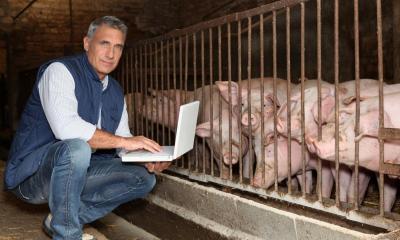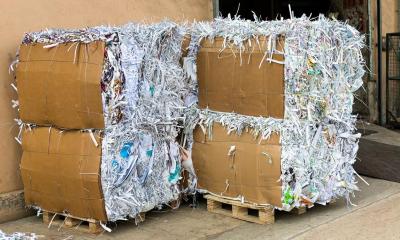
Pigs are produced outdoors or indoors, with outdoor production the lower cost option for new pig farmers. You'll find all you need to start up and run your own pig farm in our practical guide.
- Research your target market
- Types of pig farm
- Herd performance
- Estimate sales
- Buy an existing business
Research your target market
Market challenges
UK pig farming is currently facing a crisis. Farmers are dealing with a range of challenges including staffing shortages, lower prices for finished pigs and rising costs – particularly energy and feed. Defra figures suggest that pig producers made a loss of £31,000 a year from pig farming alone. This is in stark contrast to other types of farming. Average profits of more than £120,000 were recorded by the cereals, general cropping, dairy and poultry sectors.
Estimate demand
Make an estimate of the type and number of customers who might buy your products to ensure that your pig unit is as successful as possible. This is particularly important if you are looking to add value to the animals you produce by selling direct to the public.
Trade sales
You may find that a large proportion of your sales will be trade sales. Your trade customers may include:
- national supermarket chains and other large food retailers
- meat processors and abattoirs
- manufacturers
- wholesalers
- local retailers and caterers
If you are intending to supply to large concerns, contact them to get some idea of the price you would expect to receive - especially as the price for finished pigs is currently dropping - along with any other relevant contract details, such as feeding requirements, penalties for your animals not reaching specified targets, and so on.
You might find that joining a producer group or co-operative is the most effective way for you to sell to large organisations.
Similarly, if you are intending to supply local retailers and catering establishments directly, it's a good idea to contact them to find out if they would be willing to take your produce and also what supplying these businesses will actually involve. For example, it is likely that you will have to pay to have your animals killed and dressed by an abattoir before selling the meat or carcases to local establishments. Some - such as local retailers - may want you to package the produce as well.

Award-winning website design
Squarespace provide easy to build, professional websites that stand out. Pick from a range of beautiful templates and customise to fit your needs whether you want a portfolio site, blog or online store.
Direct sales
If you plan to sell direct to members of the public - either through your own outlet, at a farmers' market or in some other way - try to establish if there is enough demand in your area for meat sold in this way. Market reports published by the industry body AHDB Pork are a good source of information about how the overall market for pig meat is currently performing and its future prospects. Visiting local farmers' markets and talking to producers who already sell at them will give you a good idea of the level of demand in your area and you may be able to identify gaps in the market that you could fill.
Find out what people want
If you are planning to sell a large proportion of your produce through local retailers and catering outlets, consider carrying out a survey of those businesses to find out what sector of the market you should aim for. Talk to prospective customers to establish the type of produce that is popular. For example, you may find that some cuts of meat are more commonly purchased and that added value items, such as joints ready for cooking prepared with herbs or a marinade sell very well - an example of this is pulled pork, which has captured the public's imagination. You may also find that free-range and organic produce is very popular, as well as anything that is particular to your region - such as the breed of animals or the way meat is cured.
Types of pig farm
There are two main types of pig farming in the UK, indoor production and outdoor production. Indoor production is still the most popular, accounting for around 60% of all herds with outdoor herds making up the remaining 40%, although outdoor production has gained in popularity in recent years. Indoor herds may be intensive or semi-intensive.
Indoor herd
The most common breeds of pigs in indoor herds are Large White and Landrace crosses and hybrids of these. Indoor pig herds are kept in a steady warm climate – making these herds less cost-effective due to the current energy price rises. They are either breeding herds or feeding herds.
Breeding herd
The breeding herd consists of sows and their piglets (before they are weaned) and boars. Once the sows are around 6 or 8 months old, they are mated with the boar or impregnated using artificial insemination. After giving birth, the sows generally feed their young for 3 or 4 weeks until the piglets are weaned.
The piglets are moved to separate pens where they remain until they reach a weight of about 30kg.
Feeding herd
Feeding herd is the term given to pigs being fattened to slaughter weight. Many pig farms have both a breeding and feeding herd. On a farm with both types of herd, the piglets that have reached around 30kg (known as weaners) are moved to rearing pens until they reach their slaughter weight of around 90kg.
If the farm has only a feeding herd they buy in weaners from a specialist weaner producer. (A weaner producer follows the procedures described in Breeding herd above and then sells the 30kg pigs, rather than taking them through to market weight.)
Outdoor herd
Outdoor herds are still in the minority in the UK but numbers have grown rapidly over the years. As outdoor pig farming tends to be less intensive it requires less capital investment, so is attractive to people starting up. Outdoor pigs are generally part Duroc, a breed that is hardy enough to withstand fluctuations in weather conditions and temperatures.
In outdoor herds the sows are typically housed in corrugated huts, known as arcs, and have field access. The majority of the piglets produced by sows in outdoor herds are fattened in indoor rearing pens.
Herd performance
When you make financial forecasts for your pig unit, it is important that you use realistic estimates for the physical performance of the herd, including making an allowance for the death of a certain percentage of your animals.
You might expect the following performance:
Indoor herds
- Sow mortality: 7.6%
- Litters per sow per year: 2.2
- Mortality of pigs born alive: 12.5%
- Pigs reared per sow per year: 27.8
Outdoor herds
- Sow mortality: 5.3%
- Litters per sow per year: 2.2
- Mortality of pigs born alive: 12.5%
- Pigs reared per sow per year: 25.1
Figures are based on national averages and used for illustrative purposes only. Your results may differ significantly. Ongoing AHDB Pork research also includes average, top third and top 10% performance data for breeding, feeding and rearing herds. Source of figures: AHDB Pork
Estimate sales
When you are making an estimate of your sales income you need to take into account:
- the price you will receive, bearing in mind that pig prices can fluctuate significantly from one year to the next
- the quantities that you will be selling (the number of pigs per year, or the volume of pork cuts and other pork products if you intend to process your animals to add value)
- any other income from sources other than your pig unit
You also need to consider such things as:
- your own experience (or lack of it)
- unexpected levels of mortality amongst your animals
- lower than anticipated numbers of pigs raised
Buy an existing business
You might decide to buy an existing pig farm rather than start your own venture from scratch. Buying a going concern can mean that the stock, customers, regular sales, staff, premises and machinery are already in place.
Try to establish why the business is for sale - for example, is the owner keen to retire or is there another personal reason for selling up - in recent years, many small pig farmers have left the industry as they have found it increasingly difficult to break even.
Your market research into the sector as a whole will help you to establish whether or not the owner is selling because he or she can no longer generate enough income from the business. This may not necessarily deter you - you may be confident that your proposed method of pig farming will be successful regardless of the previous financial results achieved by the vendor.
But buying a business can be a hazardous, expensive process unless you have the right skills and experience on your team, including legal and financial know-how. Establish the genuine trading and financial position, so that the price you pay for the business is not too high.


